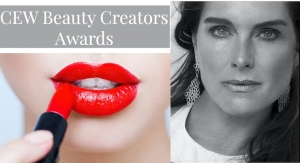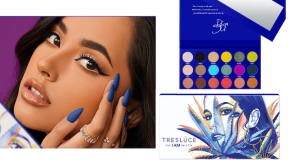Jamie Matusow, Editor-in-Chief06.15.17
Much of the content of Day 2’s sessions at MakeUp in LosAngeles (February 8-9, 2017) was devoted to cosmetic packaging—specifically the necessary—and “inseparable”—interaction between product, package and applicator. Specific categories tackled were Mascara, Lipgloss, Lipsticks, Pencils and Foundation. Each topic was discussed by a panel of speakers from suppliers that specialized in the particular category.
Preceding these workshops, on Thursday morning, Gérald Martines, founder and president of IN.SIGNES briefed show attendees on how to make the "right packaging choice," via a general
101-type packaging course.
He emphasized that makeup products are the combination of the three integral elements, mentioned above—and went through the logical steps in which decisions have to be made to achieve the ultimate combo. Martines told the audience: “It’s a jungle out there—there are so many choices.”
The steps included: Defining the Makeup Arena, with 11 zones to treat; 4 types of bulk; and 9 applicator technologies.
To create a makeup product, brands must determine the target (eyes or lips, for example) to develop the active ingredients; figure out the formula’s texture; select an applicator; choose a pack. Then they must set up a supply chain, with a packaging supplier, an applicator supplier and a formulator.
Next, comes the choice of an applicator, which depends on the nature of the area (hair, skin); size and curvature of the area; whether the formula is to be blurred or precise. Will it be an independent applicator like a brush? Will the product best be served with a felt or flock tip, a ball, a spatula, sponge or puff?
There are also 12 packaging types, in Martines’ experience: pencil, pen, roll-on, swivel mechanism, jar, compact, vial and wand, tube, bottle and closure, bottle and dropper, bottle and dispenser, and airless.
Criteria to consider when it comes to the package itself, includes the level of protection, the level of convenience, hygiene, precision, restitution ratio and image.
For the brand, said Martines, “Packaging is extremely important as it stays with the consumer for the life of the product.” What’s more, he added: “The packaging acts as the brand ambassador—and the customer will re-buy…or not.”
FOR MORE ON APPLICATORS: See this story Beauty Packaging’s June issue.
Preceding these workshops, on Thursday morning, Gérald Martines, founder and president of IN.SIGNES briefed show attendees on how to make the "right packaging choice," via a general
101-type packaging course.
He emphasized that makeup products are the combination of the three integral elements, mentioned above—and went through the logical steps in which decisions have to be made to achieve the ultimate combo. Martines told the audience: “It’s a jungle out there—there are so many choices.”
The steps included: Defining the Makeup Arena, with 11 zones to treat; 4 types of bulk; and 9 applicator technologies.
To create a makeup product, brands must determine the target (eyes or lips, for example) to develop the active ingredients; figure out the formula’s texture; select an applicator; choose a pack. Then they must set up a supply chain, with a packaging supplier, an applicator supplier and a formulator.
Next, comes the choice of an applicator, which depends on the nature of the area (hair, skin); size and curvature of the area; whether the formula is to be blurred or precise. Will it be an independent applicator like a brush? Will the product best be served with a felt or flock tip, a ball, a spatula, sponge or puff?
There are also 12 packaging types, in Martines’ experience: pencil, pen, roll-on, swivel mechanism, jar, compact, vial and wand, tube, bottle and closure, bottle and dropper, bottle and dispenser, and airless.
Criteria to consider when it comes to the package itself, includes the level of protection, the level of convenience, hygiene, precision, restitution ratio and image.
For the brand, said Martines, “Packaging is extremely important as it stays with the consumer for the life of the product.” What’s more, he added: “The packaging acts as the brand ambassador—and the customer will re-buy…or not.”
FOR MORE ON APPLICATORS: See this story Beauty Packaging’s June issue.




























